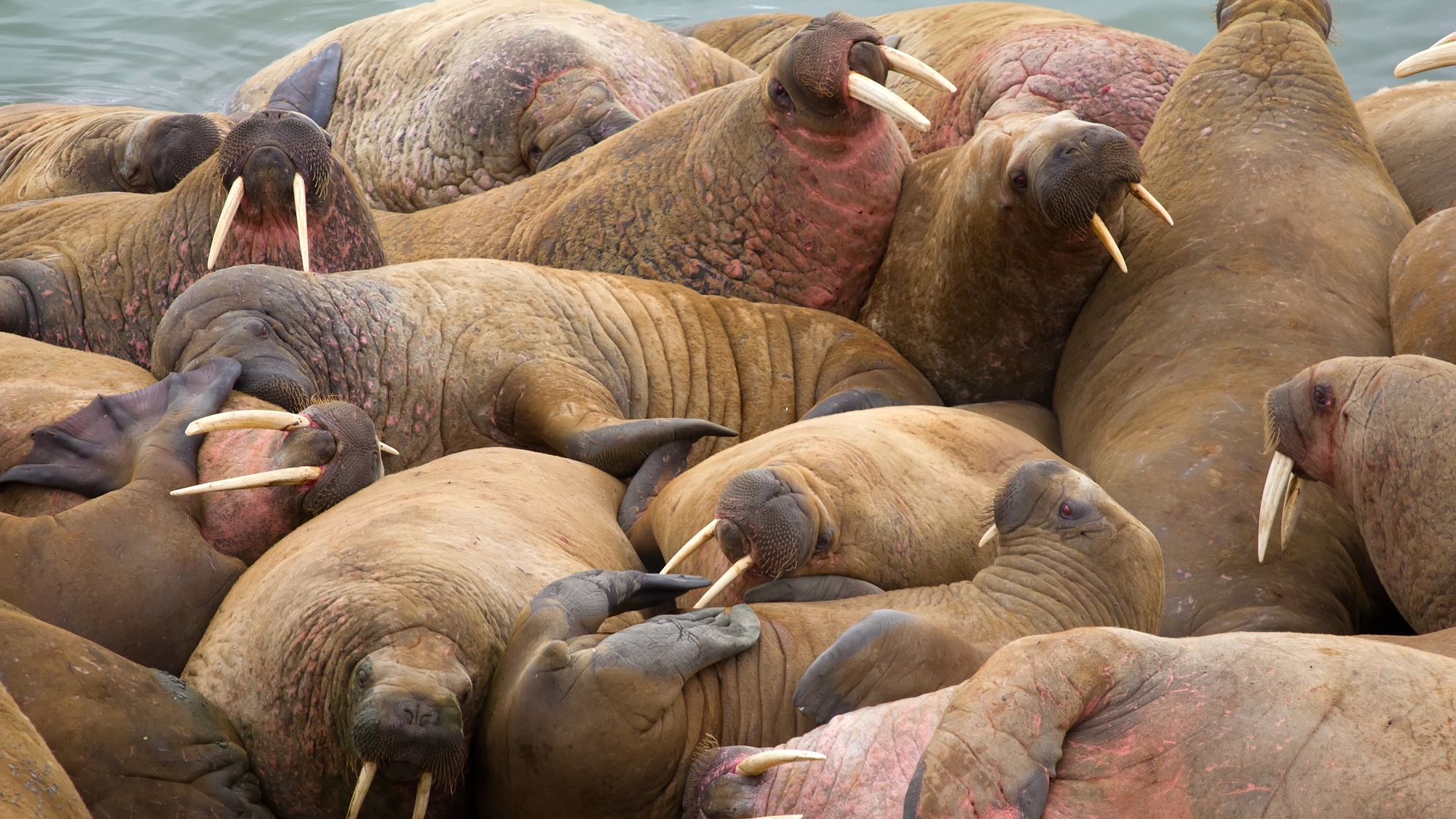

It’s well established that Viking explorers made it to North America hundreds of years before Christopher Columbus. Recently discovered evidence, however, indicates Norse sailors weren’t only the first Europeans to likely meet Indigenous societies—genetic analysis of walrus DNA indicates their ivory trade routes may have been complex, expansive, and on a tight deadline. To further bolster their claims, some of the researchers even set sail in traditional Norwegian ships to showcase technology of the time.
Ivory was a major luxury commodity used to make a variety of products such as jewelry and tools across Europe during the medieval era. Norse cultures were integral for sourcing the material given their northern geographic locations, a demand that likely drove hunting parties to expand their search range. But this hunting territory appears even greater than previously believed, thanks to a study published September 27 in Science Advances from an international team led by researchers at Sweden’s Lund University.

Using genetic “fingerprinting,” the experts identified the origins of 31 ivory artifacts recovered from Greenland Norse settlements and other major European trading hubs. Their findings revealed the ivory fragments came from Atlantic walruses (Odobenus rosmarus rosmarus), a species that lives across vast ranges of the North Atlantic Arctic.
“What really surprised us was that much of the walrus ivory exported back to Europe was originating in very remote hunting grounds located deep into the High Arctic,” Peter Jordan, study co-author and Lund University professor of archeology, said in a statement on September 30.
The new information, however, immediately begged a follow-up question: given the ivory was sourced as far away as North Water Polynya and the interior Canadian Arctic, was it truly possible for Norse traders to reach these walrus populations?

Instead of just computer modeling or archeological inferences, Lund University doctoral researcher Greer Jarrett decided to find out for himself firsthand. He and colleagues tested two types of traditional Norwegian boats in open waters similar to those used during the Viking Age—a smaller fyring vessel, as well as the larger version called a fembøring. Through these experiences, the team was able to better estimate the cargo capacity and crew needs for each ship, as well as their possible distances.
“The combined results indicate that the smaller six-oared boats could have been rowed from the Western Settlement as far as the Qeqertarsuup Tunua (Disko Bay),” Jarrett and study co-authors concluded, while adding that it was “also clear” longer-range trips were possible using the larger ships.

Based on their expeditions and subsequent calculations, the team believes trips towards areas populated by North American Indigenous communities like the Thule Inuit could take between a few weeks to months, depending on the distance and conditions. That latter factor was particularly important, explained Jarrett.
“Walrus hunters probably departed from the Norse settlements as soon as the sea ice retreated,” he said. “Those aiming for the far north had a very tight seasonal window within which to travel up the coast, hunt walrus, process and store the hides and ivory onboard their vessels, and return home before the seas froze again.”
[Related: Even Vikings had to pay fines.]
These new discoveries, Jordan added, have major implications for the relationship between the two “entirely different cultural worlds” separated by thousands of miles of ocean. He explained that Greenland Norse visitors would have had European physical features and beards, dressed in woolen clothes, and sailed in plank-built ships stocked with iron-tipped lances for walrus hunting. The more Asiatic-featured Thule Inuit, meanwhile, utilized advanced toggling harpoons, insulated fur clothing, as well as kayaks and larger umiak boats built with stretched animal skins.
Although the researcher’s study does not present direct evidence of contact between Norse and Thule Inuit communities, they stressed that the hunting areas “were no empty polar wilderness.” Instead, they were populated by multiple Indigenous societies, all of whom relied on the same walrus populations as the Vikings. In Monday’s announcement, Jordan stated that “much more work” is needed to understand these potential interactions, “especially from an Indigenous as well as more ‘Eurocentric’ Norse perspective.”
